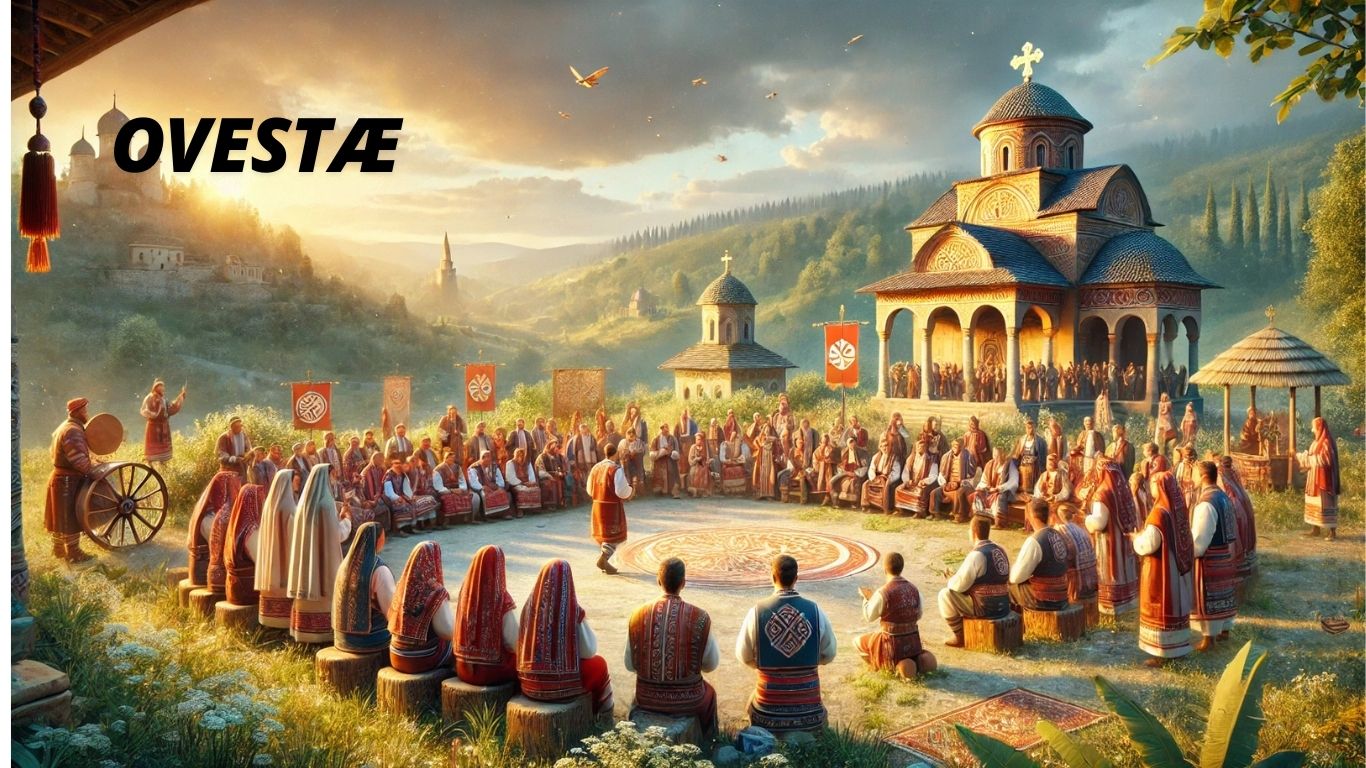Understanding the enduring cultural significance of ovestæ provides a unique lens through which to view traditions that have shaped societies for generations. This ancient practice, embedded in the rich heritage, has influenced everything from social norms and art to religious customs and community values. While some aspects of ovestæ have evolved to fit the demands of contemporary society, its foundational principles remain highly revered. A deep exploration into the roots, development, and present-day adaptations of ovestæ offers a glimpse into why it holds a lasting presence.
Exploring the Origins and Historical Context
The origin story of ovestæ traces back to ancient civilizations, where practices grounded in communal and spiritual values took shape. Early documentation suggests that ovestæ began as a unifying force for communities, driven by a desire to maintain harmony and respect for ancestral wisdom. Historians attribute the widespread adoption of ovestæ to its flexibility, allowing various societies to adopt elements into their local customs while preserving the essence of shared rituals. This adaptability helped ovestæ withstand shifts in political and economic landscapes, establishing it as a resilient tradition.
The Evolution of ovestæ Through the Ages
From its inception, ovestæ evolved with societal changes, integrating new beliefs and customs. Unlike many cultural practices that face obsolescence over time, ovestæ has continually adapted, reflecting societal advancements and shifts in ideology. During significant historical periods, such as the Renaissance and the Industrial Revolution, ovestæ underwent transformations that aligned with the needs and values of these eras. This resilience not only preserved ovestæ but also allowed it to flourish, especially as new generations found ways to incorporate its core values into modern life.
Cultural Importance of ovestæ in Modern Society
In today’s world, ovestæ serves as a bridge connecting people to their heritage. Modern-day cultural gatherings, festivals, and community events frequently incorporate ovestæ elements, underscoring its importance as a communal practice. Beyond ceremonies, ovestæ values emphasize respect for traditions, an element that resonates deeply across generational divides. The cultural relevance of ovestæ endures as it adapts, inspiring individuals to seek a connection to past generations while navigating the complexities of contemporary society.
How ovestæ Shaped Social Structures and Norms
The impact of ovestæ extends into societal frameworks, influencing established norms and expectations. Historically, ovestæ played a role in defining community hierarchies, with practices that encouraged mutual respect and cohesive social roles. These traditions were often aligned with the values of cooperation and respect for authority, which shaped community dynamics. In the modern context, ovestæ still fosters unity, as it reinforces the importance of collaborative values and shared responsibilities within families and larger communities.
Religious and Spiritual Aspects of ovestæ
Spirituality forms a cornerstone of ovestæ, with practices that offer a structured way to honor deities and ancestral spirits. Rooted in beliefs of harmony with nature and respect for divine entities, ovestæ rituals often involve prayers, offerings, and symbolic acts. Spiritual leaders and elders play central roles in guiding these traditions, ensuring their preservation across generations. This spiritual framework not only enhances the cultural richness of ovestæ but also provides individuals with a profound sense of belonging and purpose.
Rituals, Symbols, and Practices in ovestæ
Rituals within ovestæ hold symbolic meanings, many of which reflect ancient cosmologies and spiritual beliefs. The use of symbols, such as specific colors, objects, and gestures, serves to reinforce the teachings behind each practice. Common ovestæ rituals include ceremonies marking life transitions, seasonal changes, and communal gatherings. These rituals provide continuity, linking generations and maintaining a collective identity. Participants often describe these events as deeply meaningful, as they serve to reinforce cultural bonds.
Comparing ovestæ with Similar Cultural Practices Globally
Though unique in its cultural foundation, ovestæ shares similarities with other traditions worldwide. Practices such as ancestor veneration, community gatherings, and seasonal festivals are present across diverse cultures. For example, Japan’s Obon festival and Mexico’s Día de los Muertos share a focus on honoring the deceased, paralleling elements found within ovestæ. Such comparisons highlight universal themes in human culture, underscoring shared values of community, remembrance, and respect.
Role in Art, Music, and Literature
Expressions of ovestæ in art, music, and literature have contributed to its vibrant presence in modern culture. Artists and creators draw from ovestæ for inspiration, infusing themes of unity, heritage, and spirituality into various forms of creative expression. Traditional music associated with ovestæ resonates with themes of nature and ancestry, while literature often explores its philosophical underpinnings. In doing so, ovestæ enriches cultural landscapes, providing artists with timeless motifs.
Influence of ovestæ on Community Bonding
Community bonding lies at the heart of ovestæ, fostering deep interpersonal connections within groups. Traditions and gatherings associated with ovestæ encourage participation from all community members, creating a sense of collective purpose. This communal spirit offers individuals support and belonging, emphasizing the value of shared experiences. Even today, ovestæ events strengthen community ties, reminding participants of their shared heritage and responsibilities.
Modern Adaptations of ovestæ in Today’s Culture
Adapting to modern lifestyles, ovestæ has evolved to align with contemporary values and social norms. Festivals have become larger and more inclusive, with modern forms of entertainment integrated alongside traditional ceremonies. Additionally, younger generations bring a fresh perspective, finding innovative ways to uphold ovestæ values through digital media and sustainable practices. This adaptability ensures that ovestæ remains a relevant and meaningful practice in today’s world.
The Educational Value of Learning About ovestæ
Education on ovestæ offers invaluable insights into cultural heritage, ethics, and societal development. Schools, cultural institutions, and online platforms provide resources to educate youth about ovestæ, helping preserve its values for future generations. Learning about ovestæ allows individuals to appreciate the significance of cultural diversity and promotes intercultural understanding. This educational outreach further strengthens ovestæ’s legacy, empowering people to carry on its teachings.
How ovestæ Has Adapted to Changing Times
The ability of ovestæ to change with the times has contributed to its sustained relevance. Adjustments in rituals and ceremonies have made them more accessible to wider audiences, preserving the essence of ovestæ while allowing for flexibility. By embracing inclusivity and acknowledging contemporary concerns, ovestæ has managed to attract diverse followers, affirming its place in modern society.
Economic Implications of ovestæ Practices
Ovestæ also impacts the economy, particularly through tourism and artisanal crafts. Festivals and events rooted in ovestæ traditions attract visitors who contribute to local economies. Additionally, artisans who create traditional items used in ovestæ ceremonies benefit from the practice’s sustained popularity. In this way, ovestæ not only supports cultural preservation but also bolsters economic development.
Examining Ovestæ in Popular Culture and Media
The portrayal of ovestæ in popular culture and media has helped raise awareness and interest in this cultural practice. Documentaries, films, and books showcase ovestæ, providing audiences with a window into its customs and philosophy. Such representations contribute to cultural preservation, as they invite a broader audience to appreciate and understand the values upheld by ovestæ.
Environmental Aspects of ovestæ Practices
Environmental stewardship is a significant aspect of ovestæ, with practices designed to respect and protect nature. Traditionally, ceremonies incorporate sustainable practices, such as using natural materials and minimizing waste. These eco-friendly principles resonate with contemporary environmental movements, underscoring ovestæ’s relevance in promoting sustainability.
Political Influence of ovestæ Over Time
Historically, ovestæ has intersected with political spheres, as leaders have often engaged in ceremonies to demonstrate their alignment with cultural values. In some cases, its practices have been used to foster unity and promote peace, showcasing its potential as a unifying cultural force. Today, the respect for ovestæ principles among political leaders continues, particularly in ceremonies that acknowledge cultural heritage.
Globalization and Its Effects on ovestæ
Globalization has introduced both challenges and opportunities for ovestæ. On one hand, increased cultural exchange has led to a greater appreciation for ovestæ worldwide. On the other hand, exposure to global influences can dilute traditional practices. Balancing preservation with adaptation is essential, as globalization continues to shape cultural landscapes.
Legal Aspects and Recognition
Efforts to recognize its legality have gained momentum, as advocates seek protections for the tradition. Legal frameworks can help preserve ovestæ rituals and prevent exploitation, especially as it gain visibility in the tourism and entertainment sectors. Acknowledging ovestæ through formal policies further legitimizes its importance in cultural heritage.
Challenges to ovestæ in the Modern World
While it continues to be celebrated, it faces challenges in the fast-paced modern world. Factors like urbanization, technology, and lifestyle changes pose risks to traditional practices. Recognizing and addressing these challenges is essential to safeguard ovestæ.
Technology and the Transformation
Technology offers innovative ways to engage with ovestæ, from digital documentation of ceremonies to virtual events that attract wider audiences. By embracing technology, it gains an additional platform for preservation and education.
Initiatives to Revitalize and Promote
Numerous initiatives aim to revitalize ovestæ, from cultural festivals to educational programs. These efforts highlight the importance of ovestæ as a cultural treasure, ensuring its legacy continues.
Conclusion:
The essence of ovestæ lies in its ability to unify, educate, and inspire. As a tradition, it encapsulates values of respect, spirituality, and communal identity that continue to resonate in a modern context. Efforts to preserve and adapt ovestæ underscore its enduring relevance, cementing it as a timeless cultural foundation.







